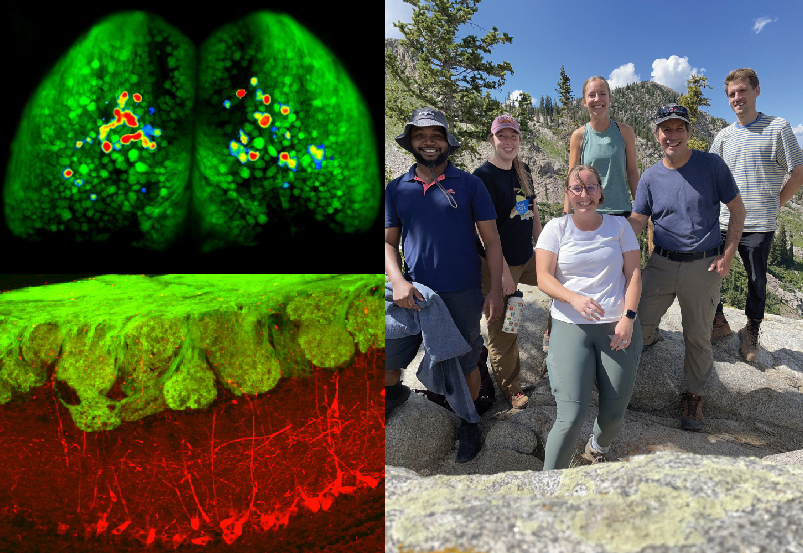Project Background
This project focuses on testing how odors activate neurons in the mouse brain. How the nervous system encodes information is one of the central problems in understanding brain function, and odors are one of the most important cues driving behavior in research animals such as mice, so the mouse olfactory system is a powerful model fur understanding basic principles of brain function and information processing by neural circuits in health and disease.
The major approach of this laboratory is to use imaging to visualize neural activity in real time in the brain of awake mice while presenting the mice with a wide variety of odors, such as pure odors and natural odors. We are able to image from multiple types of neurons to understand how neurons communicate to encode information. This is an opportunity to gain experience using popular neurobiology techniques and learn more about how sensory information is encoded in the brain.
Student Role
The specific goals of this SPUR project are to explore responses to novel odors that have not yet been mapped in terms of their activity in the mouse brain and to try to understand how neural activity relates to the chemical features and smells of these novel odors.
The SPUR fellow will aim to complete a small project aimed at understanding how neurons in the mouse brain encode information about odors. The student will work closely with a postdoctoral researcher in designing experiments, preparing reagents and stimuli, performing behavioral training in mice, collecting brain imaging data, and analyzing results. Over the course of the summer, the SPUR fellow will progress towards collecting data independently.
Student Learning Outcomes and Benefits
The SPUR fellow will learn how to conduct research in a basic-science experimental neuroscience laboratory. This will include learning basic lab skills such as record-keeping, solution-preparation, animal handling, histology and data analysis. It will also include learning more specialized skills such as laser-based fluorescence microscopy and principles of targeting neurons with genetic tools. The fellow will also learn how to read and review scientific papers and to prepare results at a level appropriate for publication in a scientific paper. Through the fellow should gain a much stronger background in neuroscience principles and in an understanding of cutting-edge tools for investigating nervous system function. These outcomes will be beneficial in further study in experimental science, and in establishing a track record of research experience. For successful projects there is an opportunity to present the results of their research at a national meeting or to be included as a contributing author on a subsequent publication.

Matt Wachowiak
-
We study how the nervous system encodes odor information, and how the brain processes this information. In other words, how does the brain identify smells? This is a tough problem because most smells are complex mixtures of different odor molecules, because the number of different smells that an animal must detect and identify is huge, and because the olfactory environment is highly varied over time and space. Because of the unique nature of the problem that odors pose for the nervous system, studying olfactory processing may lead to novel insights into how the brain processes complex information in general.
-
We use optical tools to directly visualize neural activity in genetically- and anatomically-defined neuron populations and to investigate how neurons process olfactory information as an animal smells an odor. We also use optical and other genetic tools to manipulate neuronal activity in order to assess how different elements of olfactory circuitry shape odor coding and odor perception. We are mainly focused on circuits of the olfactory bulb, the first stage of olfactory processing in the brain.
